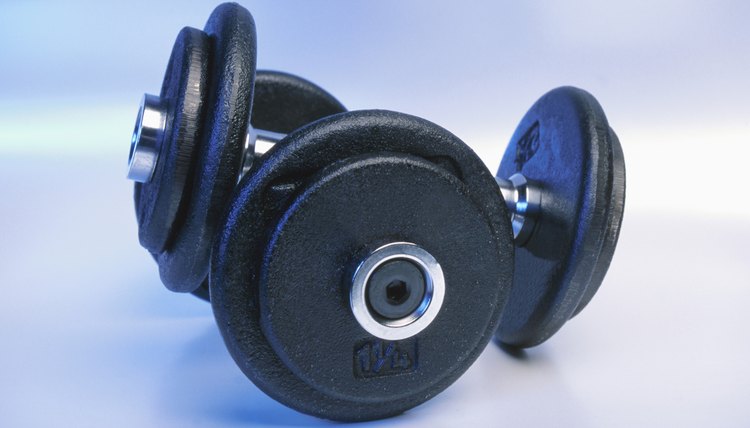What does fact checked mean?
At SportsRec, we strive to deliver objective content that is accurate and up-to-date. Our team periodically reviews articles in order to ensure content quality. The sources cited below consist of evidence from peer-reviewed journals, prominent medical organizations, academic associations, and government data.
The information contained on this site is for informational purposes only, and should not be used as a substitute for the advice of a professional health care provider. Please check with the appropriate physician regarding health questions and concerns. Although we strive to deliver accurate and up-to-date information, no guarantee to that effect is made.
Dumbell Front Raises: Benefits and Variations (with Video)

Weight training offers a variety of muscular benefits. Dumbbell front raises target the front or anterior region of the shoulders, also known as the deltoid muscles and are commonly incorporated in an upper body weight training workout and is also a staple of bodybuilding. This shoulder exercise is a classic among trainers and for good reason. Perform front raises two or three days per week with at least a day of rest between sessions to allow your front delts and other muscles to adequately recover.
What is the proper technique for front raises?
To start this shoulder workout, stand with your feet shoulder-width apart, back straight, and hold a pair of dumbbells. Allow your arms to hang down toward the floor in front of you with your palms facing your thighs. With a slight bend in the elbows, lift your right arm up in front of you until it becomes shoulder level. Return your right arm to the starting position, then complete the up-and-down movement with the left arm. Having any range of motion during this exercise is frowned upon so avoid swinging back and forth. A neutral grip (palms facing each other) can also be used and is often favored over the palms down grip, because the latter increases the risk for shoulder impingement at the top of the movement. Proper form is very important to reduce injury on this exercise.
How do dumbbell front raises help Muscular Strength and Size
Dumbbell front raises develop your anterior shoulder muscles. Depending on your repetitions, or reps, completing front raises can result in an increase in your shoulder muscular size or strength. Front raises are an isolation exercise, meaning they require movement around only one joint. As a result, it’s an effective weightlifting exercise for targeting a small number of muscles. Unlike when using front raises on a machine, completing front raises with dumbbells and while standing requires your core muscles to contract to keep you on balance.
What is the Primary Muscle Developed
According to ExRx.net, the primary muscle targeted by dumbbell front raises is the anterior deltoid, which is the front of your shoulder. The anterior delts, or front deltoids, originate at your clavicle and then run out towards your shoulder joint, inserting at the outside of your humerus bone. Just as it does during front raises, the anterior deltoid primarily performs shoulder flexion. However, the muscle can also assist with shoulder abduction, transverse flexion and internal rotation.
Considerations
Muscles also used for front raises with dumbbells are your upper chest muscles (like the pectoralis major or pectorals), lateral deltoids, triceps, trapezius and serratus anterior muscles, all of which are muscles that surround or insert into your shoulder and scapular joints. Consider also incorporating lateral raises with dumbbells into your workout regimen, which primarily target the middle section of your deltoid, to thoroughly develop your shoulders, because front raises strictly target the front of the muscle.
Variations
There are many front raise variations that you can use to help build muscle. You can use other equipment like kettlebells, or a cable front raise to create a narrower grip that can build chest muscle. Seated dumbbell raises can help to keep your back straight during strength training. Barbell front raise with a lighter weight can also be performed with a very similar form and similar benefits. Even choosing between alternating dumbbell raise vs raising them together is a variation that can be used. Exercises like bench press or incline bench help to exercise similar muscle groups as well.
References
Writer Bio
Kim Nunley has been screenwriting and working as an online health and fitness writer since 2005. She’s had multiple short screenplays produced and her feature scripts have placed at the Austin Film Festival. Prior to writing full-time, she worked as a strength coach, athletic coach and college instructor. She holds a master's degree in kinesiology from California State University, Fullerton.
